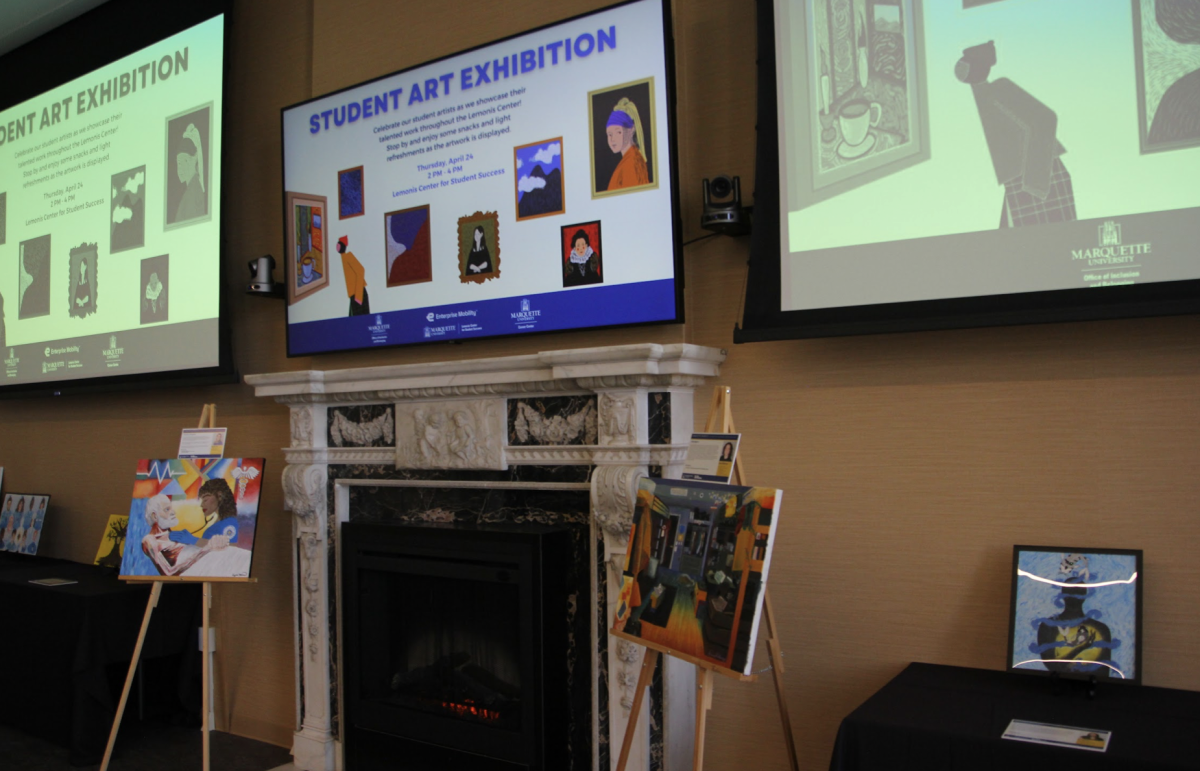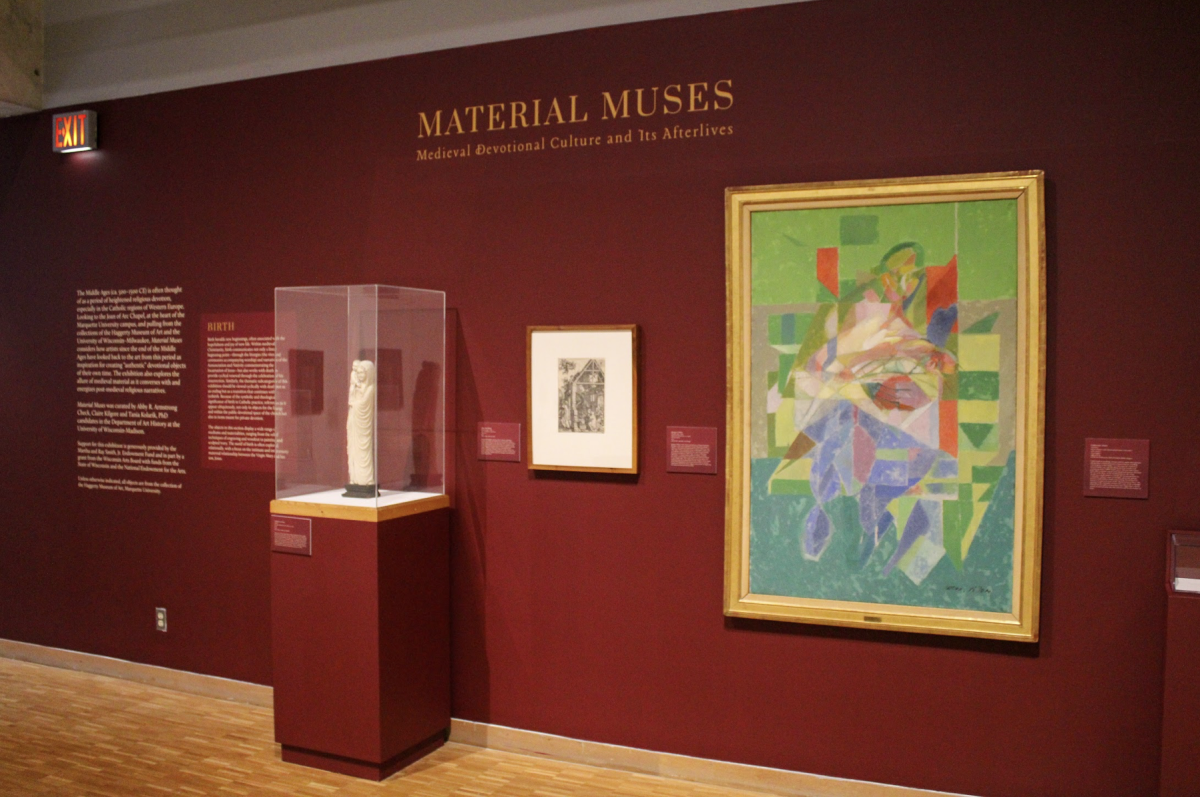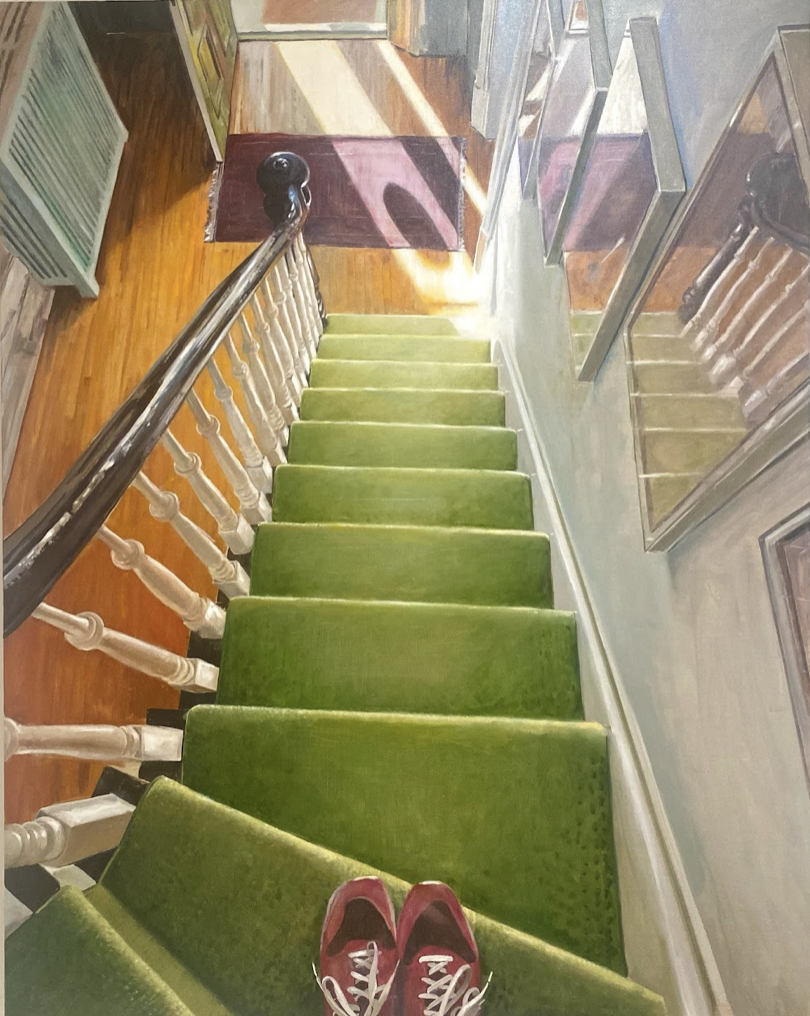
To some, the tires of a city bus might not possess much aesthetic purpose — or any purpose except transportation. But to sculptor Chakaia Booker, within those rubber tires is a work of art just waiting to be discovered.
Starting today, the Milwaukee Art Museum will host “On Site: Chakaia Booker,” an exhibition featuring more than a dozen sculptures made almost entirely out of used car, truck and tractor tires.
Booker’s sculptures stem from a modern art tradition of using found objects and industrially fabricated materials, according to the museum’s website. The textures and patterns of the tires are described as having a “woven, textile-like quality,” and the forms of the sculptures themselves as “anthropomorphic.”
Manhattan-based Booker initially began her career making wearable sculpture in the 1980s, according to the museum’s website. Now, she works out of a former factory building in Allentown, Penn., where she has the tools that allow her to slice, shred, twist and assemble the automobile tires that are her artistic medium.
According to Brady Roberts, chief curator of the Milwaukee Art Museum, the overall message of the installation is extremely open-ended.
“Some have suggested her work is a commentary on the environment and our producer/consumer/wasteful society, as these tires will be around for thousands of years,” Roberts said in an e-mail. “Others suggest it is a commentary on the global automotive empire and industrial workers, and still others see it as an expression of the African American experience.”
Whichever way you see it, Roberts said this exhibition is meant to invoke strong reactions and to start a dialogue.
“I think people will be surprised, delighted and, in some cases, not delighted with this show,” he said in an e-mail.
Lynne Shumow, curator of education at the Haggerty Museum of Art, said she was excited to receive an invitation to the exhibition’s opening event tonight, which the sculptor herself will be attending. She said Booker’s work has the look of outsider art — a type of art primarily created by artists who are self-taught and have little or no contact with the mainstream art world.
Shumow said she is anxious to see for herself the artist’s use of found objects, and also to hear Booker speak about her work at the event.
“I’ve heard (Booker) is very soft-spoken and reserved, which contrasts the volume of her work,” Shumow said.
One of the exhibition’s sponsors is the African American Art Alliance, which is celebrating its 20th anniversary this year. The organization was founded in 1990 as a committee dedicated to acquiring examples of African-American art for the Milwaukee Art Museum, according to the museum’s website.
Sandi Robinson, president of the African American Art Alliance, said members have been impressed with Booker’s work for years and are pleased to finally present it as an exhibition in Milwaukee.
Because Booker’s sculptures are so heavy and sizeable, Robinson said she anticipates viewers will feel overwhelmed.
“One would be surprised that such a woman could have the capacity to create these pieces,” Robinson said. “(Booker) transforms something we see every day into something impressively creative and abstract.”

The idea for the “On Site” exhibition series at the Milwaukee Art Museum began when the Santiago Calatrava-designed Quadracci Pavilion opened almost 10 years ago, according to Roberts. For the series, the museum commissions an artist to create a site-specific work.
Roberts said the galleries in the Quadracci Pavilion allow artists to create and present art in open, light-filled areas. The high light levels in those spaces restrict the amount of time paintings and other works on paper or textiles can
be displayed for, but allows contemporary sculptors and designers a unique space to work within.
“The on-site series is as much about the environment the objects are in as it is the objects themselves,” Roberts said in an e-mail. “The human-scale, industrious nature of (Booker’s)
work in contrast to the pristine, clean white marble of the museum will be powerful.”
“On Site: Chakaia Booker” will be displayed at the Milwaukee Art Museum starting today through February 13. For ticket prices, visit mam.org or call 414-224-3200.









